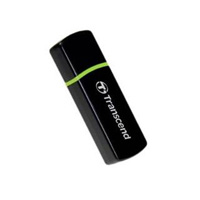 DOS on an SD card
DOS on an SD card
Perhaps, some of you would ask me: "What is it for?". There are some causes which DOS can be used with, as follows:
- DOS has a simple structure and doesn't depend on any concrete hardware thereupon.
- DOS is not severe to the system resources.
- A whole lot of the software has been written under this operating system since all over the history of computer engineering's existence.
- There's a perspective to "resuscitate" the old hardware which is not supported in modern operating systems.
- DOS is very flexible with settings.
- DOS gives colossal abilities to system programmers in their work, providing the direct access to all the computer hardware.
- DOS has been still being used at the different technological terminals, autonomous systems in spite of anything because of its stability.
- Today DOS is the free software actually which no company pretends as a possessor of the rights to.
I decided to take an SD card as a flash medium in connection with a device of a card reader. SD cards have a special tumbler which lets you turning on and off the ability of recording onto a medium. This protects from viruses, casual information's deleting. It works with the connection with the card reader as a usual USB flash drive.
 |
 |
The distribution, which will be said below, supports the network, based on TCP/IP protocols' stack, different models of network interface cards which thereby gives an opportunity of working in a LAN, the Internet.
At the moment, DOS is supporting the following network Ethernet adapters' chipsets:
- 3Com® 3C90x Fast EtherLink XL/EtherLink XL Bus Master NIC Family, 3Com® EtherLink® III 3C509, 3C509B;
- DS 21040, DS 21041, DS 21140, DS 21142, DS 21143 based Ethernet and Fast Ethernet adapters;
- VIA VT86C100A Rhine Fast Ethernet Adapter, VIA Rhine II Fast Ethernet Adapter, VIA Rhine III Fast Ethernet Adapter, VIA Rhine III Management Adapter;
- Realtek RTL8019, RTL8029, RTL8139(X);
- Novell® NE2000(X) Ethernet network cards family and compatible.
Installing
The archive with the DOS distribution should be downloaded before installing. It is packed by the WinRAR [3.50] archiver. Unpack it. A folder with the name of "flash_DOS_srv" appears in the computer. The installing will be up to in 5 - 10 minutes.Prepare the SD card and card reader.
 |
Insert the card into the card reader.
 |
Prepare a computer. I took the modern notebook of ASUS A3AC (A3A740DL58H5) for this which has a built-in Ethernet adapter, based on the well-known Realtek RTL8139(X) chipset.
 |
Insert the card reader into the notebook.
 |
Then launch the program of "flash_DOS_srv\setup\usb_and_dos\HPUSBFW.EXE" in the unpacked archive, which has been compiled as a win32 application. (The program has been taken from here.) The application automatically defines the having been inserted USB device and offers formatting it.
Following the program's instructions, format the SD card under the FAT32 filesystem, pointing out a menu item about the carrying over system files onto the medium and defining the source path which they must be taken from: it is "flash_DOS_srv\setup\usb_and_dos\dos".
After the system disk has been created on the SD card, remove the "system" and "hidden" attributes of the "COMMAND.COM" file. Then, just simply copying upon the SD card, move the rest of the files and folders from the unpacked archive (including "flash_DOS_srv\setup").
The operating system has been built. The installing is complete.
Running
Reboot the notebook for the running of the operating system and enter the BIOS settings. |
 |
Choose the "Multiple Card" menu item as the boot device.
 |
Save the BIOS settings and exit.
 |
The computer begins booting with the having been accepted settings; it means, from the SD card. At once, the prompt appears after the bootstrapping process, offering to choose an item for the further running. If you see this screen, then operating system has been built correctly on the SD card therefore.
 |
It is given 10 seconds for choosing of the needed menu item; otherwise, the item no. 1 will be loaded as default.
So, the loading is beginning.
 |
All the necessary disks are being mounted as default, the files're being copied, the environment is being created.
 |
The DOS operating system works in a LiveCD mode. This means, it doesn't require the obligatory installing onto a hard drive of a computer. At the same time, it supports the FAT12, FAT16, FAT32 filesystems as default; also, the NTFS can be worked with if loading the complementary driver. (All the necessary drivers can be found in the "flash_DOS_srv\disc\drivers" folder of the SD card or in the "R:\drivers" folder during the operating system's work.)
As the operating system has run, it is needed to set the network up, perhaps. For this, type as follows: net_set
 |
Detail all the necessary parameters: the current machine's IP, netmask, DNS, gateway and broadcast address.
 |
After all the settings have been defined, "net_set" updates them in the concrete programs.
 |
After all's been done, you may ascertain that the network functions, pingin' some kind of a node in the Internet, for example, "www.yandex.ru".
 |
Besides, you're able to enter the Internet, using the built-in graphical web browser of "Arachne".
 |
 |
 |
 |
I wish you a pleasant browsing! :-)
[download the archive, 37 Mb]